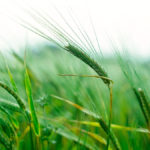
Features

Two diseases to watch for in peas
Ascochyta blight and aphanomyces root rot occur in dry years as well as wet

Australian chaff decks show promise
From Down Under: a chemical-free tool to help manage post-harvest weeds

Crop advisor casebook: Why are rows of these lentils yellowing and stunted?
A Crop Advisor's Solution from the April 23, 2019 issue of Grainews

Meet your farming neighbours: David and Sharon Rimmer
After relocating from Britain, the Rimmers have found a new family home in Manitoba

Managing Saskatchewan’s toughest weeds
You’ve seen these weeds before, and you’ll probably see them again

The science behind intercropping
When plants can share nutrients, they can yield higher together than separately

Crop advisor casebook: Is a local lack of moisture injuring this barley?
A Crop Advisor's Solution from the April 9, 2019 issue of Grainews

Barley growers impressed with VRT results
Crops hit yield and quality expectations, and bring an easier harvest

Should you spray twice for fusarium?
In a fusarium-filled field, are more applications better?

Spornado could give heads up on disease
Collecting airborne disease spores could offer growers an early warning


